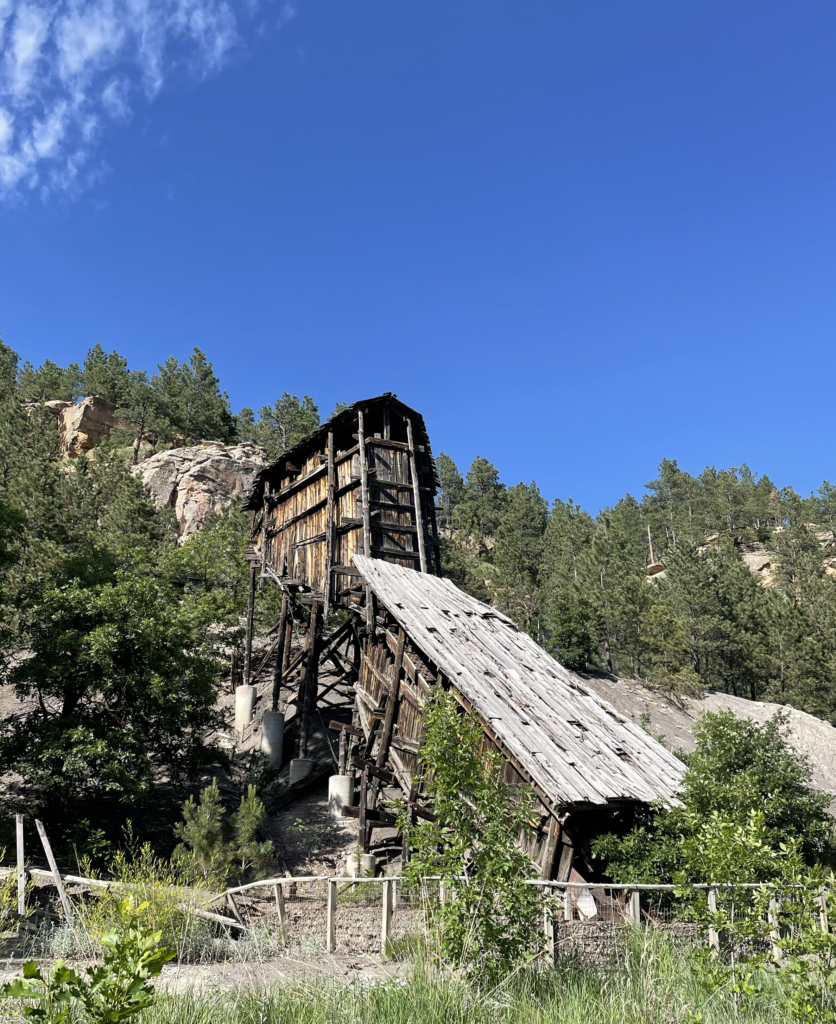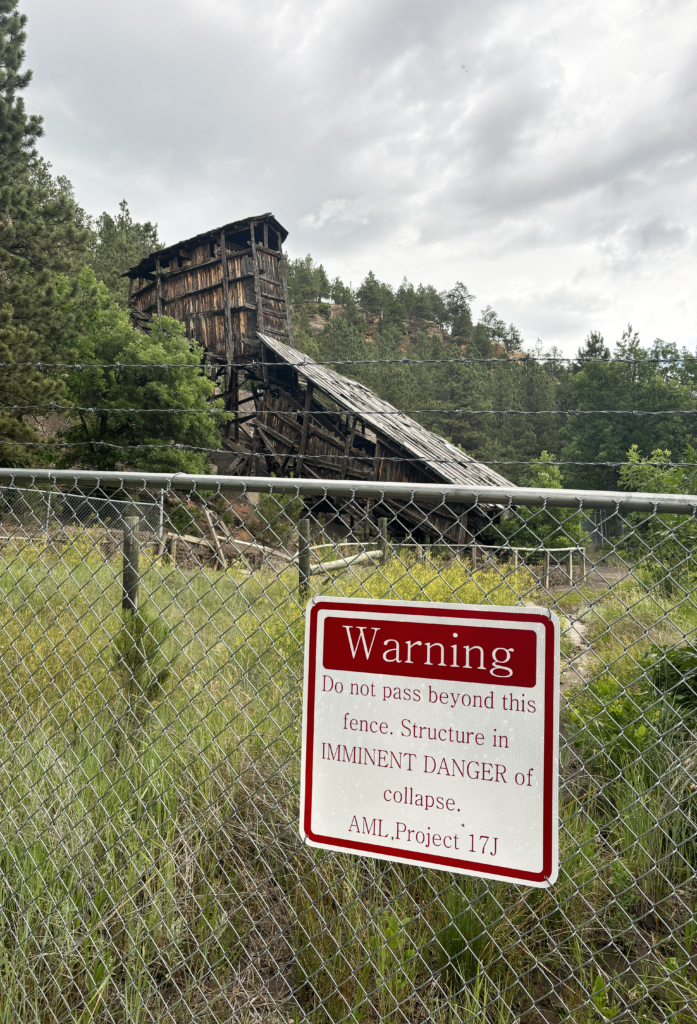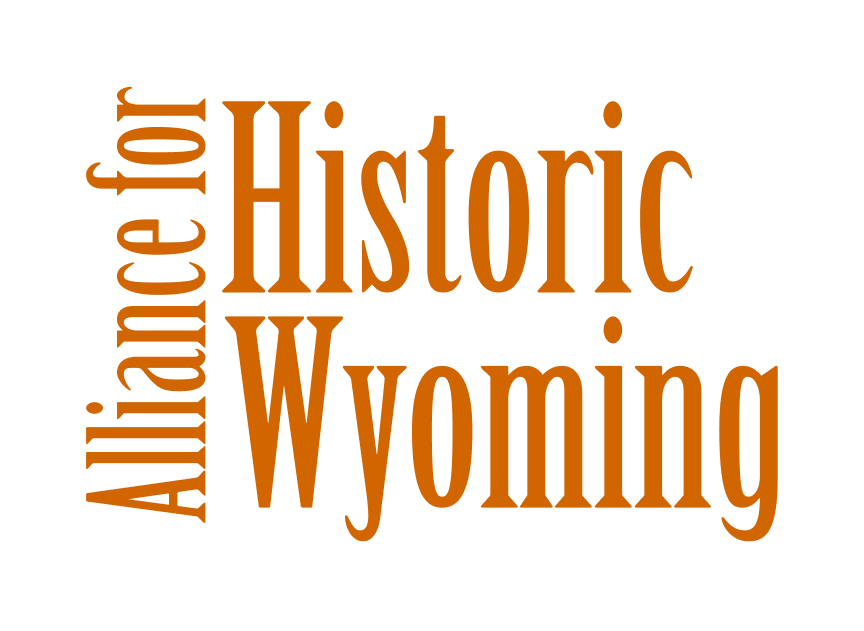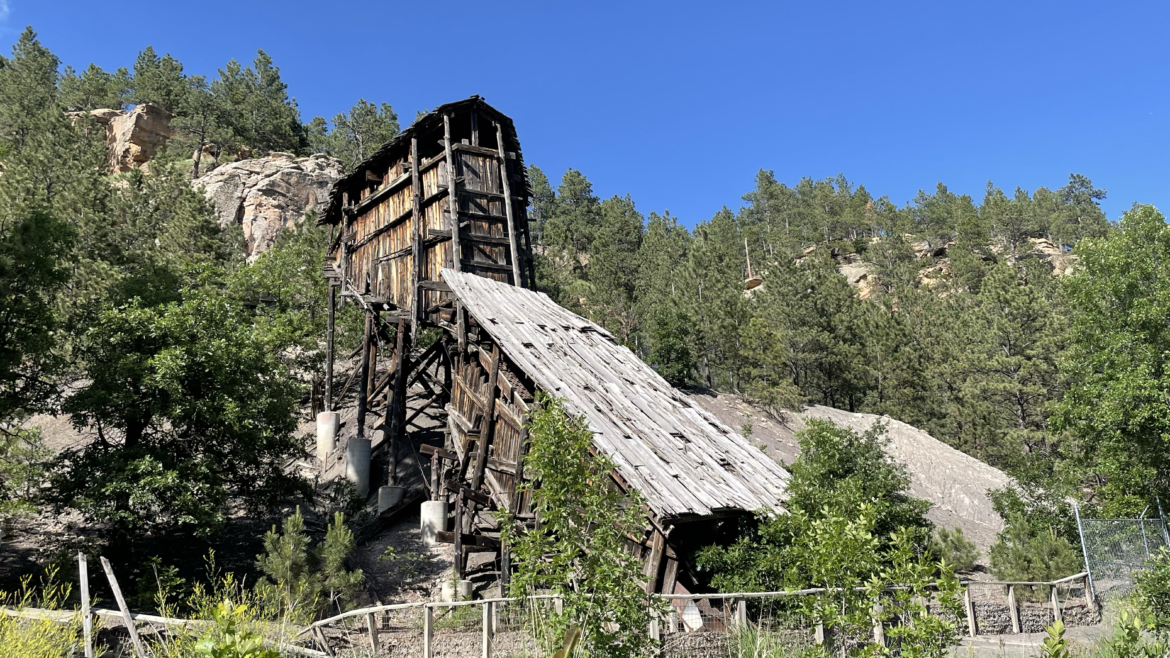The Alliance for Historic Wyoming Watch List brings statewide attention to historic properties in
Wyoming that are currently threatened with demolition or neglect. Properties listed on the
Watch List are significant to Wyoming at the local or state level and have local support for their preservation.
Significance and Threat
The Aladdin Coal Tipple is currently in imminent danger of collapse. In 2018, Abandoned Mine Lands (AML) placed a chain-link fence around the perimeter to keep visitors from getting too close to the structurally unsound building and to mitigate the safety hazard for the event when the tipple inevitably collapses. The Alliance for Historic Wyoming is actively seeking avenues to save this historic piece of mining history in Wyoming.
History
The exact history of the Aladdin Coal Tipple is not fully known, though it has been confirmed to have been built in the late nineteenth century. The Black Hills Coal Company, owners of the Aladdin Coal Mine, and builders of the Tipple, was founded in 1895.

The Aladdin Coal Mine began operation in 1889. The mine was one of the first underground coal mines in Wyoming. The miners were European immigrants seeking a better life. Italian, Swedish, Scottish, and other European immigrants faced many dangers while working in the Wyoming coal fields; roof falls and the risk of explosion from the extremely volatile coal dust were common and often fatal occurrences.
In 1898, a railroad was constructed to connect mines near Aladdin with the Chicago and Northwestern Railroad main line at Belle Fourche, South Dakota. The railroad linked the coal mines at Aladdin with the gold smelters at Lead and Deadwood.
In 1899, M.S. Kemmerer, who was developing the Kemmerer coalfields at the time, bought the controlling interest in Aladdin mines and the railroad, giving it further financial backing. However, like the fate of many short rail lines, this one fell into disuse, and when the coal supply in the region dwindled, the railroad was abandoned.
The Aladdin Coal Tipple supplied coal to smelters in the Deadwood and Lead region from its construction in the late 1800s until it was abandoned in 1942. It is an example of late 1800s and early 1900s mine engineering technology and illustrates engineering design and workmanship no longer used in the coal mining industry.
The Aladdin Coal Tipple is believed to be the last wooden coal tipple from the 1800s that is still standing in the US.

An original pathway near the Tipple for visitors to the site was constructed in the 1990s, when Wyoming’s Abandoned Mine Lands (AML) led a project to eliminate public safety hazards and create an interpretive park. This project stabilized the Tipple, but that stabilization would not last as long as projected.
Another stabilization survey was undertaken in 2011. During this attempt, it was noted how the site was extensively popular with schools in the area for history and heritage field trips and a popular tourist stopover. Later surveys revealed the extent of the damage to the Tipple and the high cost of stabilizing the structure. It was decided in 2018 to surround the Tipple with a chain-link fence to keep the public safe while waiting for an inevitable collapse.
Contact Information and Call to Action
- Rocky Courchaine, Crook County Museum District
- Jen Womack, Sagebrush Marketing
- Watch for advocacy alerts about this site from the Alliance for Historic Wyoming.
Support the Alliance
You can help the Alliance for Historic Wyoming in our efforts to preserve historic places and spaces across the state of Wyoming with advocacy, awareness, and action. The Watch List is meant to bring attention to historic locations in danger, and work is necessary to attempt to save them.
Subscribe to our Newsletter to keep track of advocacy alerts and other ways you can help in our mission, and please consider donating so we can continue this work. You can also become a member or volunteer to get involved in historic preservation of Wyoming’s buildings and sites that connect us to the past.



